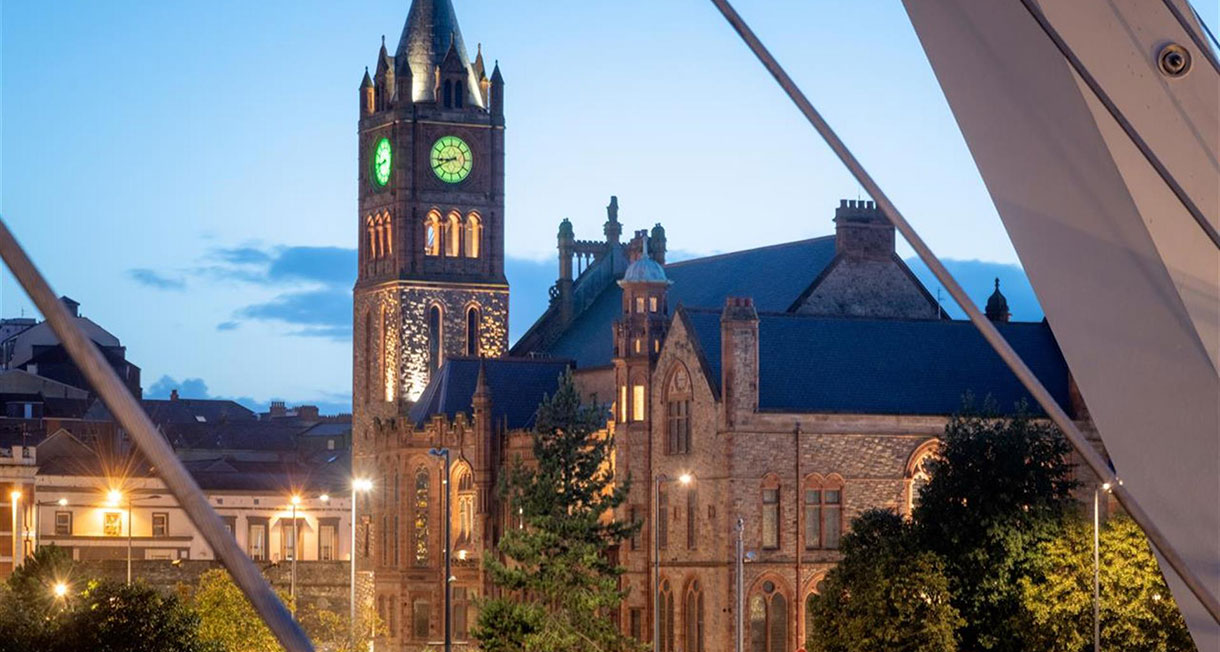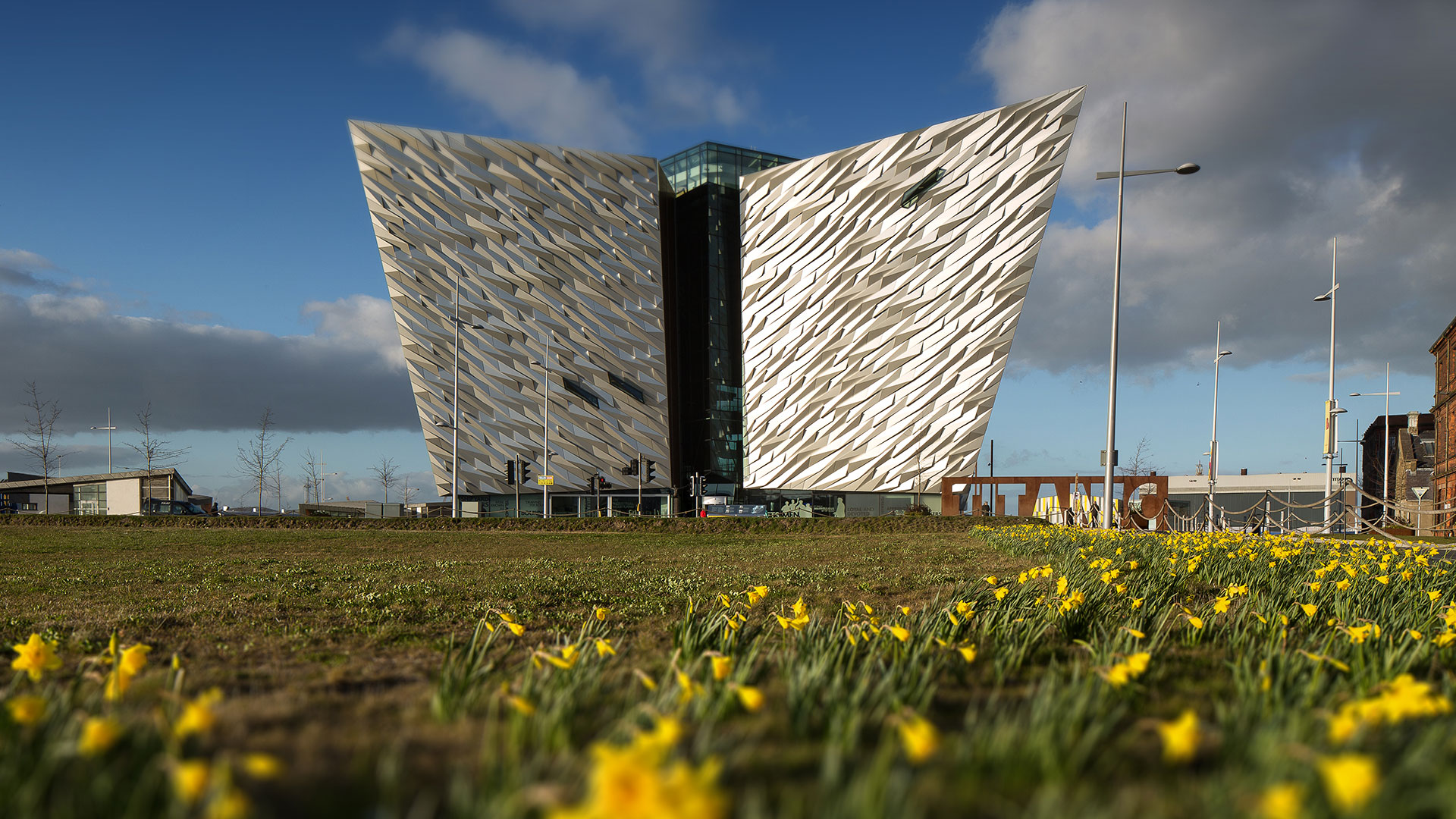Tracing your ancestors in Northern Ireland
If you're on a mission to trace your ancestors and heritage back to Northern Ireland, you'll find the following resources and information useful.
Before you plan a visit to Northern Ireland
The first step to finding your ancestors is gathering as much family history as possible. Speak to relatives, trace down old family photographs and record information on birth dates, birth places, maiden names and so on. Start to build out your own record of your family tree, identifying relatives as you go. This initial research will provide lots of useful clues to point you in the right direction.
Then move your research online, and turn to the many organisations and genealogical websites that can assist with constructing your family tree, and turning up online archives of records.
Try the Ulster Historical Foundation, a non-profit organisation, specialising in family history research who can help with tracing family records (including birth, death and marriage records). Also refer to the 1901 and 1911 Census for Ireland and Griffith’s Valuation (a record of householders from c. 1860), both of which provide useful and free information.
Ancestry information available in Northern Ireland
The first stop when searching for your ancestors is the Public Record Office of Northern Ireland (PRONI). Visit their state of the art building in Belfast’s Titanic Quarter, where you can search online archives (all Northern Ireland’s unique archival heritage is accessible to visitors) and browse articles and other documents. If you are unable to visit in person, you can still make use of the PRONI eCatalogue – complete with guides, indexes and databases. Here you’ll find records of civil registrations, birth certificates, marriage certificates and death certificates.
For locally run resources and experiences, check out Armagh Ancestry, Iveagh Ancestry, Ballymoney Town Hall or local Visitor Information Centres.
Gain historical context through guided tours

Guided Tours are a great way to learn about your family's history and the times and context in which they lived. Visit Northern Ireland's historic abbeys and monastic sites. Take a guided tour of Derry~Londonderry's refurbished Guildhall which was first built in 1887, or immerse yourself in the story of Irish immigration on a self-guided tour at the Ulster American Folk Park in Omagh.
Local information is available through experiences such as Roots Revealed and the Emigrant's Walk.
Traditional Careers
If you are looking to understand how your ancestors lived, one of the best places to start is by looking at their past occupation and the traditional industries that once underpinned society in Northern Ireland.
Traditional careers in Northern Ireland included:
Linen workers
Government support for the linen industry led to its growth throughout the seventeenth century and its expansion was used to attract new settlers to Northern Ireland from England and Scotland. By the end of the nineteenth century Belfast was the linen capital of the world.
Explore Conway Mill in west Belfast, which houses a linen museum, as well as gallery space for exhibitions. The Owen O’Cork Mill in east Belfast is home to Bloomfield Auction House, a great spot for bargain hunters, and Mossley Mill in the outskirts of the city houses a theatre and museum.
Other experiences include free guided tours at the Irish Linen Centre in Lisburn, which houses a major exhibition on the industry, including an interactive gallery with hands-on participation in the linen manufacturing processes.
Shipbuilders and engineers
Belfast is famous for its shipbuilding and maritime heritage. At its height, the city had one of the largest shipyards in the world, and it is, of course, the birthplace of the Titanic.
You can explore the city through the eyes of industrial engineering workers, innovators and shipyard men, by foot, bus, car, boat or even bike. Take a guided or self-guided tour and delve in to uncover the stories and landmarks that your ancestor may have been associated with.

The iconic Titanic Belfast celebrates the mighty ship, the amazing workers who built her and the social, historical, industrial and maritime heritage of the city. It is a must-see on any visit to Belfast.
The SS Nomadic was the tender ship to the Titanic and is the last White Star vessel anywhere in the world. This unique boat was used in Cherbourg to bring passengers out to RMS Titanic. It is positioned right beside Titanic Belfast.
Although not officially classed as wonders of the world, Samson and Goliath, look like one. The two massive Harland & Wolff shipyard cranes, which serve one of the world’s largest building docks, are certainly masterpieces of engineering.
Farmers
For anyone with a family ancestry rooted in the Northern Irish countryside it is more than likely they were engaged in the toil of the land in some form or other. If you have ever wondered about how your relatives lived, the farming life of old is reflected in some excellent museums that can offer insights into times past and the tight-knit nature of farming communities.
At the Ulster Folk Museum you can step back in time and experience the living history of daily life on the farms of 100 years ago. Explore thatched cottages, farms, schools and shops all set in beautiful parkland. Experience tasks your ancestor may have had to do, everything from country cooking to butter making, sheep shearing, spinning and horse grooming.
As a contrast to the life of the poorer cottiers or farm labourers of Ireland, try Ardress House in the apple county of Armagh. Originally a modest farmhouse, it has been expanded over the years and now has a comprehensive range of farm buildings, including a dairy, smithy, tool shed and threshing barn, all fully equipped with tools used in the 18th century.
Fishermen
Northern Ireland had a position of rare advantage in the fertile fishing grounds of the North Atlantic. During the eighteenth and nineteenth centuries herring fishing was a key sector of the economy and during this period Ardglass in County Down rose to prominence as a fishing station; a reputation it still maintains today. In the North West salmon fishing in Lough Foyle was common, as was herring fishing on a smaller scale.
For every one job in the boats, there were perhaps four back on land. The baiting of lines and net repairing were normally done by members of the fishermen's families and the catch was processed by local women known as ‘gutting girls’.
You can explore this rich fishing heritage in places such as Annalong, Portavogie and Kilkeel, where the Nautilus Centre overlooks the busy and picturesque harbour. The centre houses the Mourne Maritime Visitor Centre, which charts the history of the local harbour and the development of fishing and maritime links through the years. Its Families at Sea Exhibition is a great way to trace your relatives, with the fishing and maritime histories and photographs of over 20 local families on display.
Cockle Row Cottages, in the quaint seaside village of Groomsport, is another spot with a range of heritage information as well as a small gift shop full of local crafts and pottery.
Let us know how you get on...
People all across the world have roots in Northern Ireland thanks to thousands of years of immigration and emigration. If you make any interesting discoveries we'd love to hear about them! Share the stories of your ancestors with us on social media, using #DiscoverNI









